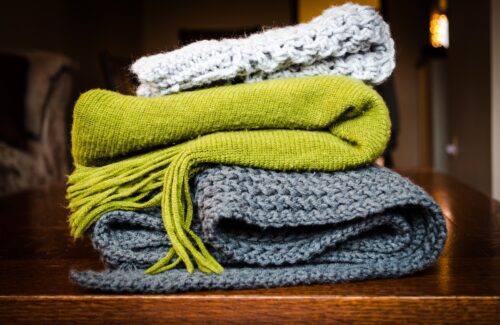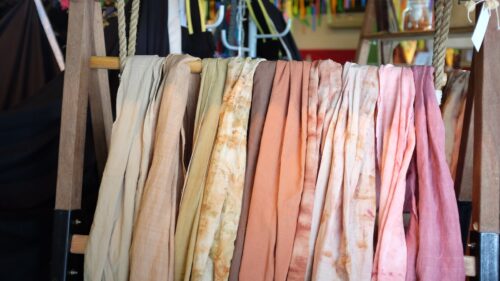Hair scarves offer the perfect lightweight accessory to add a touch of vintage glam or boho chicness to any outfit. Beyond just fashion statements, silk and satin scarves also protect hair from friction, dryness and breakage.
In this ultimate guide, we’ll explore everything you need to know about rocking fun, functional hair scarves:

- History & cultural significance
- Materials guide
- Styling techniques
- Occasions to wear them
Let’s tie into learning for locks!
A Historic Headwrap to Hair Scarves
While hair scarves trend today as cute accessories, they hold deep cultural roots and significance across many populations globally.
Origins trace back over 5,000 years to ancient Nubian traditions using headwraps to protect hair from sun damage and dust. This set precedent for scarves becoming commonplace among African women. Styles mirrored local culture, religion and status over time.
In the United States, slavery and segregation eras saw headwraps facing bans by white people fearing bonds or secret communication between Black people. Later during the 1960s Civil Rights movement, the style became a symbol of Black pride and liberation.

So while hair scarves enjoy modern popularity for fashion and function, honoring cultural context and wearing styles respectfully proves important. Their social significance lends deeper meaning beyond cute appearance.
Fabrics Guide
Material matters when selecting hair scarves. Different textiles give distinct draping, sheen, breathability and durability. Consider these factors when building your collection:
Silk – Delicate but gorgeous natural fabric that drapes floatily. Provides moisture wicking. Requires gentle care but ages well if cared for.
Satin – A woven type of silk with high luster. Smoother and more affordable alternative to pricey pure silk. Easy to care for but shows wear quicker.
Chiffon – Lightweight, sheer fabric with elegant drape. Must layer over hair to prevent snagging in delicate weave.
Cotton – Soft, breathable knit. Ideal for absorbing sweat during workouts. Skews casual. Loses shape over time with consistent wear.
Synthetic Blends – Like poly-satin and nylon-spandex offer silk sheen at lower price points. Watch heat safety for some. Easy care but nets less lifespan per scarf.

This comparison table summarizes key qualities of top hair scarf materials to consider.
Styling Techniques
Once you select perfect scarves for your needs, learning traditional styling techniques opens up limitless looks.
We’ll cover five classic ways to tie hair scarves:
Turban Wrap
How To:
- Center wide scarf behind head
- Cross two front sides over hair
- Tie ends tight at nape of neck
- Tuck/twist excess around headband
Best For:
- Quick style for bad hair days
- Adding color pops
- Formal events
Bow Accent
**To Create: **
- Tie middle at crown leaving two equal sides
- Tie ends together off-center
- Fluff, adjust, pin bow

Perfect To Pair With:
- Romantic looks
- Bandanas + cowboy hats
- Half-up dos
Bandit Bandana
Step By Step:
- Fold triangle bandana diagonally
- Center fold on forehead
- Tie two ends low at nape of neck
- Tuck point into head wrap
Matches Well With:
- Graphic tees + jeans
- Gym ensembles
- Cowgirl chic style
Braided Crown
How You Make It:
- Braid back perimeter hair
- Wrap braid across front
- Anchor scarf underneath
- Crisscross tie ends behind
Elevates:
- Boho dressy occasions
- Date night vibes
- Bridal elegance
Knotted Headband
To Recreate:
- Place middle at hairline
- Cross ends + double knot at crown
- Hide knot with scarf ends
Good For:
- No fuss throw on
- Running errands
- Beachy waves

Get creative combining techniques too for signature looks! Now let’s explore ways to work these stylish head wraps into everyday life…
Wearing Occasions
Beyond policies requiring cultural hair covering, how do you incorporate hair scarves into regular routines?
Dress Up Outfits: Fancy events, dates, and holidays call for extra flair. Choose luxe fabrics like silk or satin. Opt for formal styling like neatly tucked turbans, braided crowns and bows.
Elevate Workout Wear: Bandanas absorb sweat for tough workouts. Bright colors and prints show personality at the gym. Focus on function over fancy knots.
Bad Hair Days: Rough hair? No problem! Scarves neatly hide dirty, greasy or unwashed locks in a pinch.
Self-Care Sundays: Treat yourself to an at-home spa day. Wrap hair in a scarf while masking and pampering. The fabric protects facials and treats while adding relaxation.
Naptime Necessities: Prevent tangles, frizz and pillowcase friction while napping by tying tresses back. Wake up with hair intact!
Breezy Travel: Open car windows and convertibles call for controlling flyaways. Bows, knots and turbans prevent wild windswept hair.
See? Hair scarves serve both stylish and practical purposes for elevated living.
history Fun Ways to Wear
While we covered basics, creative souls can explore other hip ways to wear hair scarves like:
- Sarong – Tie a large, rectangular scarf around neck then style ends as a topknot, braid or messy bun cover.
- Headband – Fold a skinny scarf and tie around forehead for a hands-free narrow accent piece.
- Bangs – Wrap front half of hair with scarf ends layered as makeshift bangs across forehead.
- Elastic toggle – For slip-free positioning, attach toggles to scarf ends to securely tie under hair instead of slippery fabrics sliding off.
- Statement earrings – Show off dangly jewels by pulling back hair in a high, voluminous pouf secured with a scarf headband.

Let creativity lead the way with shapes, fabrics, accessories and positions as inspiration strikes!
history Care & Maintenance
Investing in quality hair scarves means proper care to maximize longevity. Here’s how:
- Pre-wear prep – Tightly roll and store scarves to prevent creases sitting idle in drawers. Iron if needed.
- Wash guidelines – Check fabric guidelines but hand wash delicates with mild soap in cool water is best practice. Let air dry to prevent heat damage.
- Damage checks – Inspect for holes, runs, and snags after each wear. Catch tears early before expanding and reuse shortens lifespan. Mend small holes.
- Proper folding – Never tightly wad silks or satins. Loose roll or stack rectangles. Store in dedicated scarf boxes that prevent crushing.
With some basic maintenance practices, treasured hair scarves last for many gorgeous years full of runway-worthy hairstyles.
Tie One On!
We hope this ultimate guide gets you wrapped up in excitement over hair scarves – an eternally glam accessory offering ‘50s pin-up panache.
From culture and fabric tips to styling step-by-steps plus creative inspiration, you now hold all the need-to-know details for rocking scarved hair confidence.
So grab your favorite silk or satin squares and start playing with those fabulous styles highlighted today. Show off new looks on your next big night out on the town – or even just brighten an ordinary grocery run!
However you choose to tie one on, embrace the chance to let your inner style icon shine through. Happy hair wrapping!



